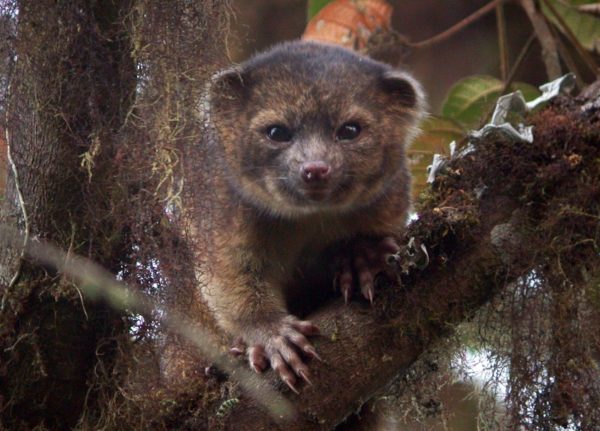The Dhaka Times Desk There is no counting the number of species of animals in the world. Recently a new animal has been found. whose name is Olinguito. Today we will know more about that animal in the picture-variety section.

The Smithsonian Institution was founded in 1846. It is mainly established for the propagation and dissemination of knowledge. Many museums and research centers are managed by the United States Government through this institution. In fact it started out as the 'United States National Museum'. In 1967, the name of this institution was changed and it was brought under government management.
What is in this museum?
There are 137 million items of different types. Under it are 19 museums, institutions of Washington DC. There are 9 laboratories and a huge zoo. The Smithsonian Institution - which is considered as one of the largest institutions in the world. Various institutions are spread under this institution in different places including Arizona, Maryland, Virginia, New York City, Panama. There are also 168 different museums. About 30 million visitors come here every year. There is no entrance fee to enter this museum.
The funding of this institution comes from donations from private and corporate institutions, government support, contributions from members and the income of various institutions vested under it. The institution also has two own publications, 'Smithsonian' and 'Air and Space Magazine'.
Discovery of Olinguito
Chris Helgen, a zoologist at the institute, has discovered a new animal called Olinguito. As Chris Helzen investigates the animals at the Smithsonian's National Museum Zoo, among the many animals he notices a small animal. It weighs about 2 pounds. Looks like a pet cat or teddy bear. In such a situation, it seemed to Helgen that it was a new species of animal. But before saying it publicly, he has to prove why it is new.
Chris Helzen said, 'For years I waited for that evidence. I worked day and night to find evidence that Olinguito is a new species. I have done a lot of research on this. I tried to prove it by DNA test. He added, 'I was always afraid - I declared Olinguito a new species, and another zoologist said it was not new, it was an animal he had discovered earlier. He may be able to present sufficient arguments in support of his evidence.'
Finally Chris Helgen turned to Kayes, the world famous zoologist. Asked him how he knew about Olinguito's usual abode. He accompanied Ecuadorian zoologist Miguel Pintu on a special one-week expedition into the deep jungles of the Andes Mountains in 2006. The incident really happened. This group of 3 people saw some Olinguito species on the high branches of trees in the deep forest. They observed their movement by going around the forest. Then he made a map showing their wandering areas. They even matched their DNA with that of the raccoon family, which lives in the branches of tall trees. They tried to find out whether there was any similarity in every limb and bone of the two animals.
After much research, they finally decided that Olinguito was their new discovery. That very day they gave it a scientific name. Bajarision nebulina (Idhangdhatrapurah Havansarhadh). This neblina is a Spanish word, meaning fog or mist. They are so named because they live in the trees of Andes misty forests.
Helgen also said that the day they were able to say with good evidence that Olinguito was a new animal discovered by them was a day of great joy. It seems that they have never had so much joy. As a mother rejoices at the birth of a child, the day was just as joyous to them. Fog forest is called cloud forest in English. Its spread in only a part of the world. The high forests in the western part of South America are known as 'cloud forests'. Olinguito lives in that forest. They have similarities with another animal there, the raccoon. Raccoons currently live in the misty dense forests of Colombia and Ecuador. They are carnivores.
It is known that this raccoon was discovered in the western hemisphere of the world in 1970 AD. They live in trees. They are small animals with grayish brown color and long tail. In this way, new animals were discovered from time to time in the Western Hemisphere, especially in the jungles and remote areas of South America. Olinguito has been living here for about 35 years. Scientists think Olinguito was a carnivore by looking at its teeth. However, other members of the raccoon family are omnivores. They are also found in Central and South America, Central and East Africa, the Philippines in Southeast Asia, and Papua New Guinea. The researchers said that their habitat is seriously endangered due to deforestation and free movement of people. They may be lost in time. Just as scientists are roaming wildly to discover all the new animal worlds in the world, these animal groups are also getting lost due to modernity. The world is not as busy to make it habitable as it is to protect these animals. But now is the time to play an active role in protecting these species - at least that's what researchers think after the discovery of this new olinguito animal. Source: Yugantar/Online.


